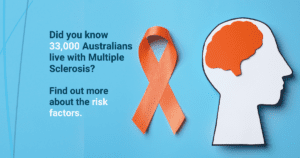
Support rural and remote communities across Australia – donate here to make a difference
3 minute read
Rural Australians are 17% more likely to experience a stroke
What’s in this article
A look at the higher rates of stroke in people in rural and remote areas of Australia. We also outline the signs and symptoms of stroke to watch out for so you can be better prepared in a medical emergency.

Stroke is one of the leading causes of death in Australia. It’s a particularly important issue in rural and regional areas because of the health disparities and extra challenges caused by distance.
A 2021 report by the Stroke Foundation found that Australians living in regional and remote communities were 17 per cent more likely to suffer a stroke than their city counterparts. Sadly, rural and remote areas also usually have less access to the specialised care needed for treatment.
This is just another example of the healthcare inequities we fight against in our work at Rural Doctors Foundation. It’s why we are so passionate about providing healthcare support to rural communities.
As always, when it comes to strokes, prevention is key. Staying active, eating a healthy diet, limiting alcohol intake and quitting smoking are just some of the ways you can make a healthy lifestyle change that can help lower your risk.
It’s important to understand the signs and symptoms so you can seek medical care as soon as possible.
What is a stroke?
A stroke occurs when blood to the brain is blocked or if there is suddenly bleeding in the brain. There are two types: Ischaemic stroke and Haemorrhagic stroke. Any type of stroke is a medical emergency as it can cause brain damage, disability or death.
Complications caused by stroke depend on the area of the brain that it damages – which differs case by case. However, it can impact how you see, feel, touch, speak, think, move and behave. Calling an ambulance and getting treatment as soon as possible is important for improving your chances of recovery.
What are the symptoms of stroke to watch out for?
According to the Stroke Foundation, using the F.A.S.T test is an easy way to remember the most common signs of stroke, outlined below:
• Face: Check their face. Has their mouth drooped?
• Arms: Can they lift both arms?
• Speech: Is their speech slurred? Do they understand you?
• Time Is critical: If you see any of these signs call 000 straight away.
Other possible symptoms to watch out for include sudden loss of vision and behaviour that seems confused or disoriented. These may be signs of a stroke or something equally serious and should be checked out by a medical professional.
Facts about strokes
There has been an incredible amount of research done on strokes as it is a prevalent problem. The Stroke Foundation offers great resources on strokes, from which we have compiled some information below for better understanding and awareness:
• One in every four people around the world will experience a stroke in their lifetime.
• It is one of Australia’s biggest killers, impacting more women than breast cancer.
• More than 80 per cent of strokes can be prevented – you can visit your GP to look for risk factors.
• In data from 2020, it was estimated that one stroke occurred every 19 minutes.
• More than 445,087 Australians are living with the effects of stroke.
Lauren Furey is Communications Officer at Rural Doctors Foundation. She understands the joys and challenges of living in a rural community and believes that all Australians, regardless of location, deserve access to high-quality health services.



